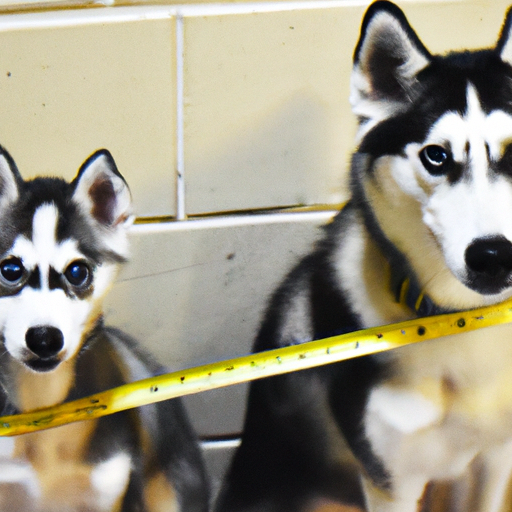Husky dogs are known for their stunning blue eyes, friendly demeanor, and athletic build. These dogs capture hearts with their wolf-like appearance and playful personality. But a common question for potential Husky owners is, “How big do Husky dogs get?” This article will cover everything you need to know about the growth and size of Husky dogs.
Table of Contents
- Understanding the Husky Breed
- Average Size of Husky Dogs
- Factors Affecting Husky Size
- Growth Timeline of Husky Dogs
- Frequently Asked Questions
Key Takeaways
- Huskies are a medium-sized breed, with males typically larger than females.
- Size can be influenced by factors like genetics, diet, and exercise.
- Huskies usually reach their full size around 12-15 months of age.
Understanding the Husky Breed
The Siberian Husky is a gorgeous and athletic breed with a history stretching back thousands of years. Originating in Northeast Asia, these dogs were bred by the Chukchi people for sled-pulling, companionship, and endurance in harsh climates. They’re known for their exceptional speed and stamina, as well as their striking appearance. If you’re considering adopting a Husky, it’s important to understand the breed’s characteristics and needs.
Average Size of Husky Dogs
Huskies are considered a medium-sized breed. According to the American Kennel Club (AKC), male Huskies usually stand between 21 and 23.5 inches tall at the shoulder, while females typically measure between 20 and 22 inches.
When it comes to weight, male Huskies can range from 45 to 60 pounds, and females typically weigh between 35 and 50 pounds.
| Husky Gender | Weight Range | Height Range |
|---|---|---|
| Male | 45-60 lbs | 21-23.5 inches |
| Female | 35-50 lbs | 20-22 inches |
Factors Affecting Husky Size
Much like humans, a Husky’s final size can be influenced by several factors. The most significant of these is genetics. Huskies from larger parents are likely to grow larger themselves, while those from smaller parents may end up smaller.
Diet and nutrition also play a crucial role in your Husky’s growth. A balanced diet that meets their nutritional needs will support healthy growth and development.
Lastly, exercise is key. Huskies are active dogs that need regular physical activity to maintain a healthy weight and muscle tone.
For more tips on caring for your Husky, check out this guide on the best dog food for Huskies from OneTopDog.
Growth Timeline of Husky Dogs
Huskies typically reach their full size by 12 to 15 months of age. By the time they’re 6 months old, they’re likely to be about two-thirds of their adult size.
Here’s a general timeline for a Husky’s growth:
- 3-4 months: 50% of their adult height, 30% of their adult weight
- 6 months: 75% of their adult height, 50% of their adult weight
- 9-10 months: Near their adult height, 75% of their adult weight
- 12-15 months: Reach their adult height and weight
Remember, each Husky is unique, and growth can vary. Regular vet check-ups can help ensure your Husky is growing at a healthy rate. For more insight into Husky development, read this Husky growth chart from OneTopDog.
Frequently Asked Questions
Q: Are Huskies considered large dogs?
A: No, Huskies are typically considered a medium-sized breed.
Q: How can I tell if my Husky is overweight or underweight?
A: Your vet can provide the best advice, but as a general rule, you should be able to feel your Husky’s ribs without pressing hard. If you can’t feel their ribs, they might be overweight.
Q: Can a Husky live in a small apartment?
A: Yes, as long as they get sufficient exercise. Huskies are active dogs and need regular walks and playtime.
Q: When do Huskies stop growing?
A: Huskies typically reach their adult size around 12 to 15 months of age.
For more on Husky care and training, visit OneTopDog’s comprehensive guide.
In conclusion, Huskies are a medium-sized breed with a lot of personality. Remember, their size can vary and is influenced by factors like genetics, diet, and exercise. So whether your Husky is on the smaller end of the scale or the larger, what matters most is that they’re happy and healthy.



